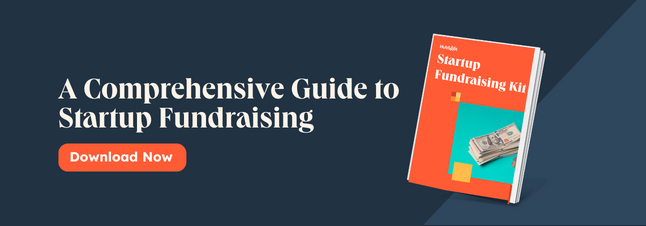Because I asked nicely, Beatriz spilled the secret sauce that led to her entrepreneurial success — aside from being a “Type A Virgo person,” that is.
Here are three things she did right to bring SUMA Wealth to where it is today.
1. Focus on The Right Audience
From the get-go, Beatriz wanted to build SUMA for the “200% generation” – young US Latinos. They are:
-
100% American: US-born, speak English, college-educated, and deeply ingrained in the American culture
-
100% Latino: Raised by Latino families, which means unique customs, expectations, and relationships with money
-
Underrepresented in media and underestimated as customers
There’s no shortage of fintech products that want to capture the US Latino audience — after all, this is a demographic with $3.2T of GDP, $3.4T of spending power, and a gap in financial literacy.
Most of these companies focus on the Spanish-dominant immigrants and their pain points, such as the distrust of banks or the struggle with English.
But youths are the driving force for the group’s financial growth, and 74% of US Latinos under 34 years old (Millennials or younger) are actually born here, and proficient in English.

Source: Pew Research Center
Beatriz sensed a big opportunity here. Because of Mitú, she already knew how to reach these Latino youths, and what content resonated with them.
She also understood that they tend to be the financial navigators and influencers in their families.
“They’re managing up to three financial accounts for other family members, so if we go through the youths, the ROI is not one-to-one, but one-to-many,” Beatriz said.
2. Let Community Drive The Product
You might think building a media network and a fintech startup are completely different beasts, but in Beatriz’s case, they’re actually quite similar.
Her mantra? Community before product.
With Mitú’s success, Beatriz realized that Latino youths respond well to pop culture, are active on social media, and need to feel belonged. So her team implemented an edu-tainment strategy to grow the SUMA community:
🎓 Partnering with Arizona State University to establish bootcamps and certificates in financial literacy
❤️ Creating social content and distributing it through media partnerships, including with Mitú, to expand their brand’s reach
📰 Building a newsletter that now has 200k+ highly engaged subscribers
“We were doing a lot of social listening, learning and testing, and then we let the audience community inform our product roadmap,” Beatriz said.
Conversations in the community showed that these youths aren’t savvy with investing, saving, or improving credit, and feel anxious about their financial role in the family.
So the app pairs finance with cultural background to ease the anxiety, using references from both Latin culture and American pop culture to break down complex concepts – like using hard and soft shell tortillas to explain hard and soft credit, or dissecting money moves of JLo.

Food is a big theme in SUMA’s financial education. Source: SUMA Wealth pitch deck
SUMA also helps young Latinos navigate the stressful finances of dating, through a partnership with Latino dating app Chispa (part of Match.com).
AI personalization is a core feature for the product – what each user sees reflects their distinct experiences, from offers that are specific to their financial journeys, to customized food metaphors for, say, Mexicans and Caribbeans.
“Our audience would say, ‘someone finally gets me,’ or ‘where have you been all my life,’ which shows a need to belong. So we built the community and product around that emotional connection,” Beatriz said.
And that connection led to SUMA’s 62% annual user growth and nearly 5x revenue increase.
3. Believing and Investing in Yourself
Raising millions of capital for your startup is often glorified, but it’s a hard road for founders, Beatriz said.
So you better believe you’re the right person for the job.
“The first checks that come in are betting on you as a founder, more than on the profits or the growth,” she said. “Make sure that you really love what you're doing, that it’s something personal, bigger than you, and bigger than money.”
Finding the investor-founder fit is also key.
Early SUMA investors didn’t include POC or women-led VCs, and it was harder for Beatriz to explain certain cultural and community aspects of the company. So in the latest round, her team prioritized Latino new fund managers, women and POC-led VCs, and impact funds.
Since she believed in the cause – to help young Latinos build wealth – and her own ability to lead the charge, Beatriz was able to attract like-minded investors.

Source: LinkedIn
The only issue that remained? Beatriz had no background in finance.
As CEO, she wanted to be well-versed in the trends and opportunities in the fintech world, even though she’s not the one giving financial advice.
So she spent nights and weekends taking as many fintech classes as possible, and earned professional certifications from Wharton, Harvard, and Stanford. Investing in her own education gives her the confidence to lead the vision for SUMA.
“I literally started this company when I turned 50, so you’re never too old to start something new that you’ve absolutely never done before,” Beatriz said. “It’s scary but exciting that you can learn and reinvent yourself in that way.”
For more content like this, join the Trends newsletter or check out our Breaking the Blueprint series.

.png)


![Freelancer vs. Entrepreneur: How Jim Huffman, CEO and Founder of GrowthHit, Went from Freelancer to Owner of a 7-Figure Agency [+ Tips for Aspiring Entrepreneurs]](https://53.fs1.hubspotusercontent-na1.net/hubfs/53/freelancer-vs-entrepreneur-1-20241021-8630800.webp)
![Business Failure: How the CEO and Founder of Acquisition.com Lost Everything Twice, Then Made $250 Million [+ Tips and Takeaways for Entrepreneurs]](https://53.fs1.hubspotusercontent-na1.net/hubfs/53/Copy%20of%20Copy%20of%20ai%20sales%20%20(1).jpg)
![How Calm's CEO Manifested a Meditation Empire [Trends Interview]](https://53.fs1.hubspotusercontent-na1.net/hubfs/53/calm-67214a68aa359.webp)
.png)

.png)

.jpg)
![How 13 Entrepreneurs Went From Zero to Billionaire [Infographic]](https://53.fs1.hubspotusercontent-na1.net/hubfs/53/zero-to-billionaire.webp)